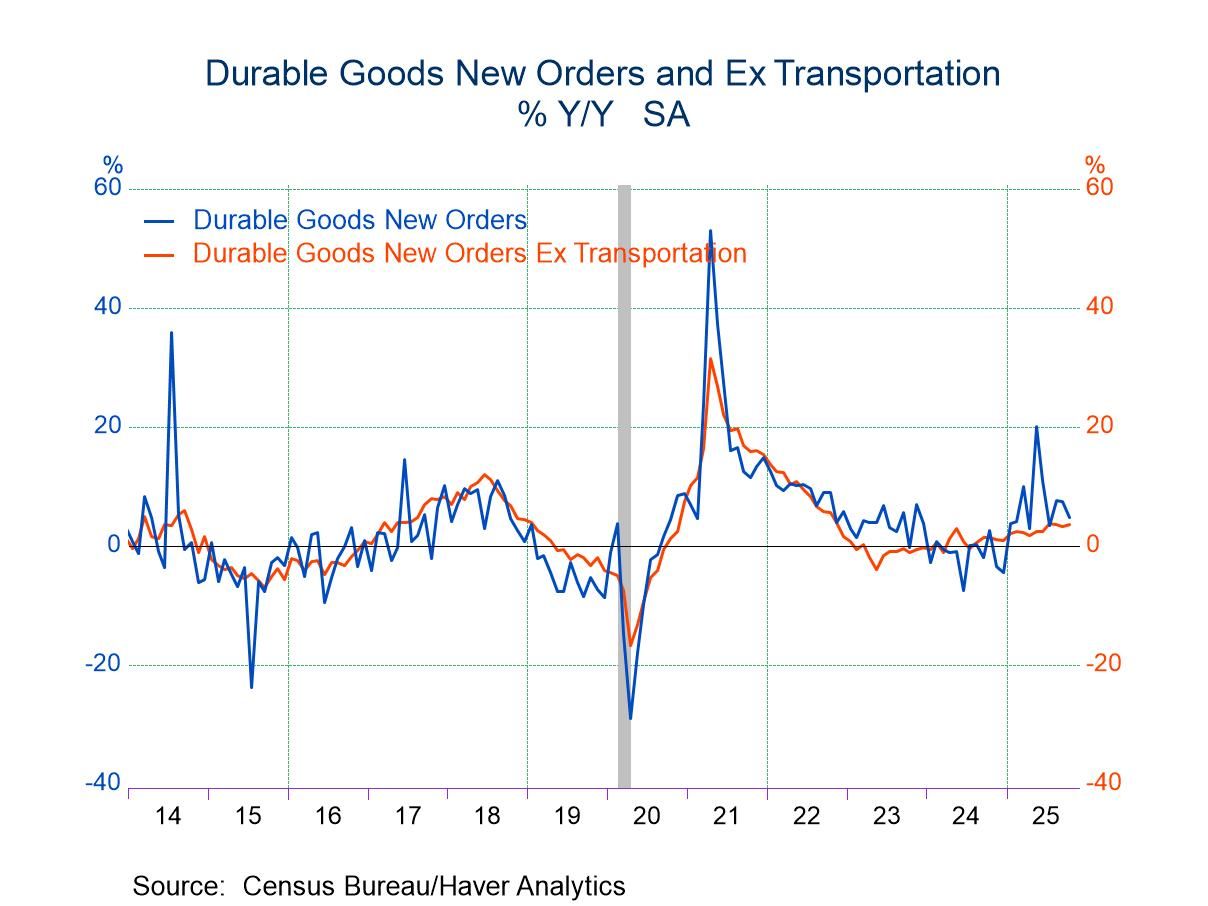U.S. Advance Trade Deficit Narrowed Markedly in April
by:Sandy Batten
|in:Economy in Brief
Summary
- Exports rose for third consecutive month while imports fell after outsized gain in March.
- April deficit well below Q1 average, auguring for trade to contribute to Q2 GDP growth.


The advance estimate of the U.S. international trade deficit in goods narrowed to $105.9 billion in April from a record $125.3 billion in March. A $115.0 billion deficit had been expected in the Action Economics Forecast Survey. Exports of goods increased 3.1% m/m (21.2% y/y) on top of a 5.8% m/m increase in March. By contrast, imports fell 5.0% m/m (+21.7% y/y) in April following an outsized 11.1% m/m gain in March. At an annual rate, the trade deficit in April was more than $20 smaller than the Q1 deficit. Net exports have been a meaningful drag on overall GDP growth over the past seven quarters. Today's release puts net exports on track to contribute to overall GDP growth in Q2. This would be first contribution to overall growth in eight quarters.
Except for the catch-all "other" category, every major category of exports posted a monthly gain in April, led by a 13.3% m/m jump in exports of foods, feeds and beverages, their third consecutive monthly increase. Industrial supplies and materials exports increased 2.7% y/y on top of a 12.5% monthly jump in March and exports of capital goods ex autos rose 2.6% m/m, their largest monthly gain in six months.
The April decline in imports was relatively broadly based, led by an 8.2% m/m drop in imports of industrial supplies and materials which likely partly reflected temporarily lower petroleum prices. Imports of nonfood consumer goods excluding autos fell 7.9% m/m while exports of capital goods excluding autos slipped 3.9% m/m. By contrast, exports of foods, feeds and beverages increased 2.5% m/m and auto imports rose 3.3% m/m.
The advance international trade data can be found in Haver's USECON database. The expectation figure is from the Action Economics Forecast Survey, which is in AS1REPNA.
Sandy Batten
AuthorMore in Author Profile »Sandy Batten has more than 30 years of experience analyzing industrial economies and financial markets and a wide range of experience across the financial services sector, government, and academia. Before joining Haver Analytics, Sandy was a Vice President and Senior Economist at Citibank; Senior Credit Market Analyst at CDC Investment Management, Managing Director at Bear Stearns, and Executive Director at JPMorgan. In 2008, Sandy was named the most accurate US forecaster by the National Association for Business Economics. He is a member of the New York Forecasters Club, NABE, and the American Economic Association. Prior to his time in the financial services sector, Sandy was a Research Officer at the Federal Reserve Bank of St. Louis, Senior Staff Economist on the President’s Council of Economic Advisors, Deputy Assistant Secretary for Economic Policy at the US Treasury, and Economist at the International Monetary Fund. Sandy has taught economics at St. Louis University, Denison University, and Muskingun College. He has published numerous peer-reviewed articles in a wide range of academic publications. He has a B.A. in economics from the University of Richmond and a M.A. and Ph.D. in economics from The Ohio State University.






